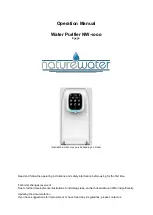
• Always use solvent filters on tubing lines in solvent bottles.
• Filter buffers with a 0.2-µm filter membrane.
• Keep concentrated stock solutions for use when preparing working solutions.
• Do not add fresh buffer to old, which can promote microbial growth.
• Keep all solvent lines primed.
• Flush buffers from the system with water immediately after you use them.
• If the system is idle for extended periods (more than 24 hours), use 10%–20% organic solvent
in water as a storage solvent.
• Keep the seal wash line primed.
• Prime solvent lines during system start-up.
• Monitor the waste level to ensure that it is never too high.
• Start with gradients that include an organic component (0.1%, for example) to provide a more
consistent and predictable gradient formation.
• Use the Load Ahead option when you want a shorter cycle time.
• When installing or removing a column, always hold the active preheater’s reusable
compression fitting in place. Rotate the column or optional in-line filter to install or remove it.
2.2 Dispersion
UPLC systems exhibit low dispersion, a fixed instrument characteristic measured by the extent of
peak broadening, which occurs because of the system volume.
Small particle chromatography uses small, high-efficiency columns. A typical 2.1 × 50 mm UPLC
column has an approximate 174-µL volume, compared with 2.5 mL for a typical 4.6 × 150 mm
HPLC column. The smaller column and particle size requires a system with low dispersion that
reduces dilution and band broadening, thus maintaining the symmetrical peak shape, height, and
sensitivity produced by the high-efficiency column.
An ACQUITY UPLC I-Class Series system typically exhibits a bandspread (5σ) of ≤ 7µL or ≤ 9µL
when configured with an SM-FL or SM-FTN, respectively. An Alliance HPLC system can exhibit a
bandspread between 35 µL and 50 µL. Because of the dispersion differences, a band on an
Alliance system experiences a significant increase in dilution, compared with an ACQUITY UPLC
I-Class Series system. As a result, UPLC peak concentrations are higher than HPLC
concentrations. Because solubility effects are more apparent in low-dispersion, high-pressure
systems, it is important to adjust column load appropriately.
April 4, 2018, 715005704 Rev. A
Page 25
















































